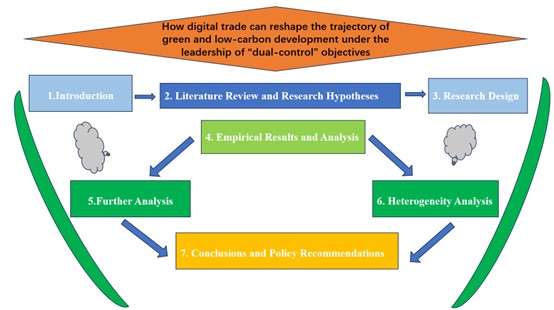
In the context of the dual - control targets, this study focuses on the impact of digital trade on the level of green and low-carbon development. Using panel data from 30 Chinese provinces over the period 2011-2022, an empirical test was conducted. The results indicate that digital trade has a significant positive effect on green and low -carbon development, effectively reducing carbon emission intensity. This conclusion remains robust after a robustness test. Digital trade can reduce carbon emission intensity by improving resource - use efficiency and leveraging economies of scale. Industrial structure transformation has a positive moderating effect on the carbon-reducing impact of digital trade. Heterogeneity analysis shows that digital trade has a better carbon - reducing effect in the central and western regions, areas with less developed digital infrastructure, and non-pilot groups. Based on these findings, policy recommendations are proposed from multiple levels, including national, regional, and digital trade development. These recommendations include strengthening infrastructure construction, establishing uniform standards, promoting regional-differentiated development, and optimising pilot policies, to facilitate the role of digital trade in green and low - carbon development under the dual - control targets.
Total file downloads: 38